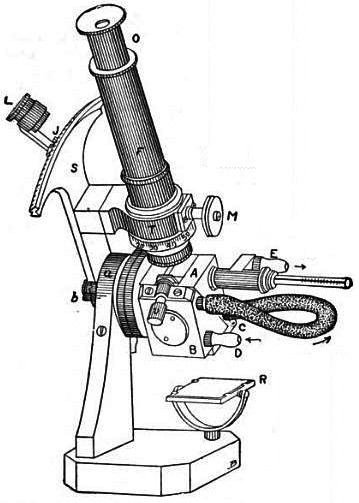In physics, we certainly know who called with the fluid. Fluids affect the movements of particles and scale objects around the fluid. Suppose a fluid liquid, say fluid example is a cup of water that we do not yet know the content in detail both chemically and in the general. In the physical sciences we are able to analyze the water content by using several methods just call it like X-Ray Diffraction or with a refractometer.
Refractometer is itself a tool used to determine and analyze the content or concentration of the dissolved material. This means that we are not only able to find the solution in terms of content but we are also able to calculate how much the concentration of dissolved material in a liquid. The principle of the work done by refraktomere is based on the principle of the properties of light, ie, reflection, refraction, and even diffraction.
For additional information, tools refractometer which is known by many people, known as Abbe refractometer, which is an instrument invented by Dr.. Ernst Abbe, a physicist who originated from Germany and was discovered in the early 20th century BC. Abbe took the principle of interference of a light which strike two transparent materials.
In order to more easily, here is the following explanation of the refractometer According to Wikipedia.org
Ernst Abbe (1840–1905), working for the Zeiss Company in Jena, Germany in the late 19th century, was the first to develop a laboratory refractometer. These first instruments had built-in thermometers and required circulating water to control instrument and fluid temperatures. They also had adjustments for eliminating the effects of dispersion and analog scales from which the readings were taken.
In the Abbe' refractometer the liquid sample is sandwiched into a thin layer between an illuminating prism and a refracting prism. The refracting prism is made of a glass with a high refractive index (e.g., 1.75) and the refractometer is designed to be used with samples having a refractive index smaller than that of the refracting prism. A light source is projected through the illuminating prism, the bottom surface of which is ground (i.e., roughened like a ground-glass joint), so each point on this surface can be thought of as generating light rays traveling in all directions. A detector placed on the back side of the refracting prism would show a light and a dark region.
Over a century after Abbe's work, the usefulness and precision of refractometers has improved, although their principle of operation has changed very little. They are also possibly the easiest device to use for measuring the refractive index of solid samples, such as glass, plastic, and polymer films. Some modern Abbe refractometers use a digital display for measurement, eliminating the need for discerning between small graduations. However, the user still has to adjust the view to get a final reading.
The first truly digital laboratory refractometers began appearing in the late 1970s and early 1980s, and no longer depended on the user's eye to determine the reading. They still required the use of circulating water baths to control instrument and fluid temperature. They did, however, have the ability to electronically compensate for the temperature differences of many fluids where there is a known concentration-to-refractive-index conversion. Most digital laboratory refractometers, while much more accurate and versatile than their analog Abbe counterparts, are incapable of readings on solid samples.
In the late 1990s, Abbe refractometers became available with the capability of measurements at wavelengths other than the standard 589 nanometers. These instruments use special filters to reach the desired wavelength, and can extend measurements well into the near infrared (though a special viewer is required to see the infrared rays). Multi-wavelength Abbe refractometers can be used to easily determine a sample's Abbe numbers.



visit here and happy weekend!
ReplyDeletevisit here......
ReplyDeleteHi there, I really like your site. Keep in touch..
ReplyDeleteGreat knowledge :)
ReplyDeletefollow me back
ReplyDeleteHappy Holidays to you..
ReplyDeletehello friend have a great weekend!! cbox ints free if you want a new chat.
ReplyDelete